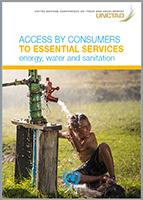
In 2010, the United Nations General Assembly explicitly recognized the human right to safe drinking water and sanitation and acknowledged that these are essential to the realization of all human rights.
In 2015, the General Assembly identified clean water and sanitation as Sustainable Development Goal 6 and affordable and clean energy as Sustainable Development Goal 7 of the 2030 Agenda for Sustainable Development.
Also in 2015, the United Nations General Assembly adopted the revised United Nations guidelines for consumer protection (the guidelines), which are universally recognized as a valuable set of principles for setting out the main characteristics of effective consumer protection legislation, enforcement institutions and redress systems.
They aim to assist interested United Nations Member States in formulating and enforcing domestic and regional laws, rules and regulations that are suitable to their own economic, social and environmental circumstances, while encouraging the sharing of experiences in consumer protection.
The first two “legitimate needs” recognized by the guidelines in paragraph 5 are “access by consumers to essential goods and services” and “the protection of vulnerable and disadvantaged consumers”.
The present report aims to provide policy makers with background on the emerging trends and considerations as well as policy options, focusing on the key requirements for inclusive and affordable access.
Following this introduction, chapter two provides an overview of the international policy frameworks, namely the guidelines and the Sustainable Development Goals.
Chapter three describes the features of the network services of water and sanitation, and energy, and places them in the consumer protection framework of inclusivity, affordability, and rights.
Chapter four considers the role to be played by competitive markets and the interplay of competition policy and the regularization of the informal sector.
Chapter five contains several policy options in the light of sustainability, including demand and supply-side efficiencies and fiscal options for demand reduction.
A brief conclusion follows with a summary of policy considerations.


